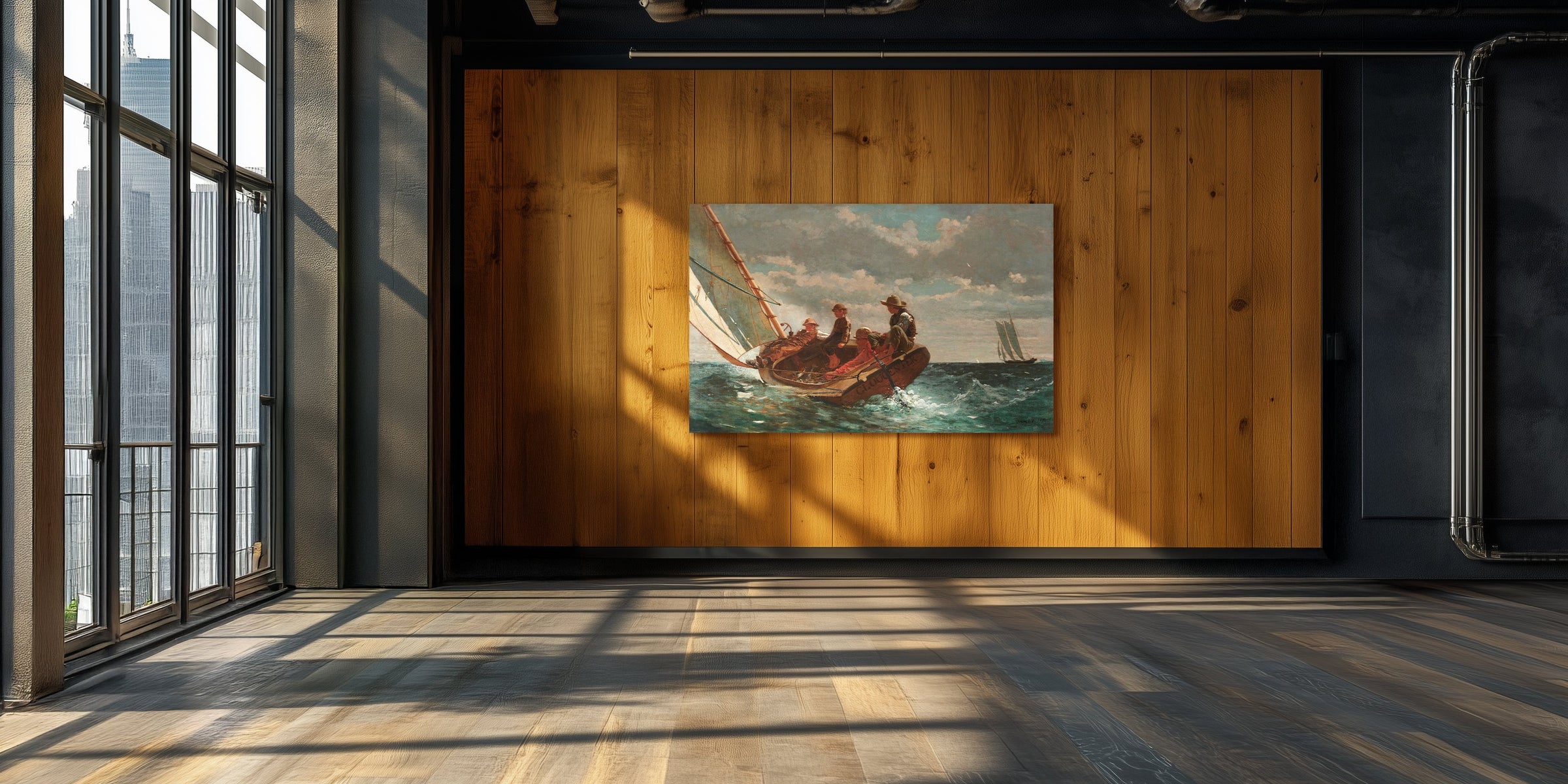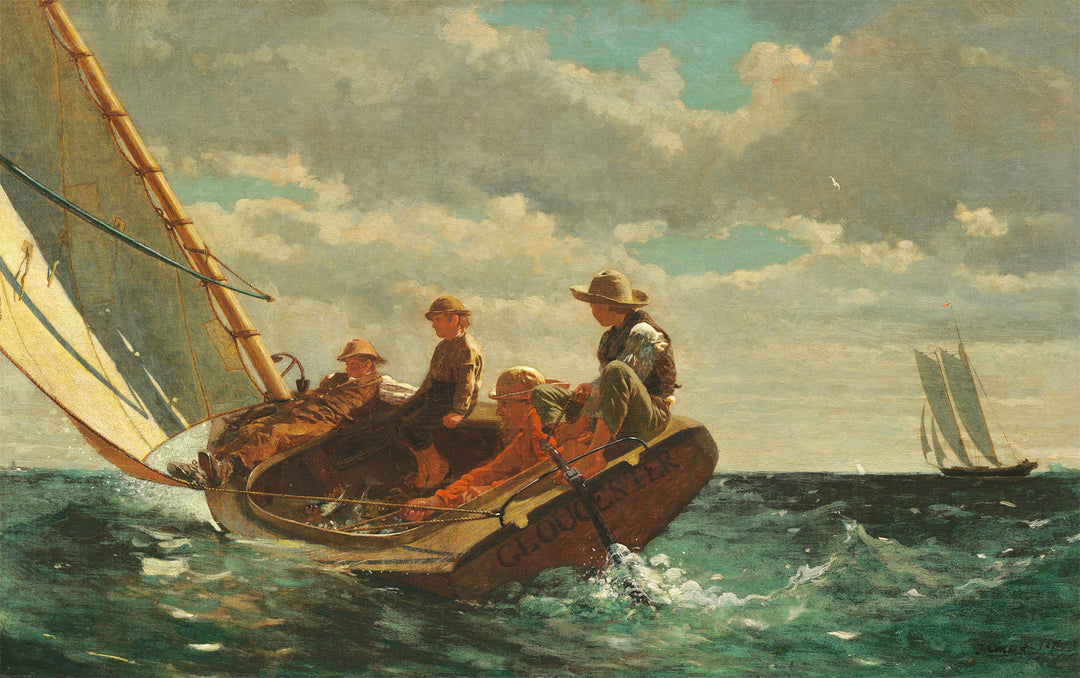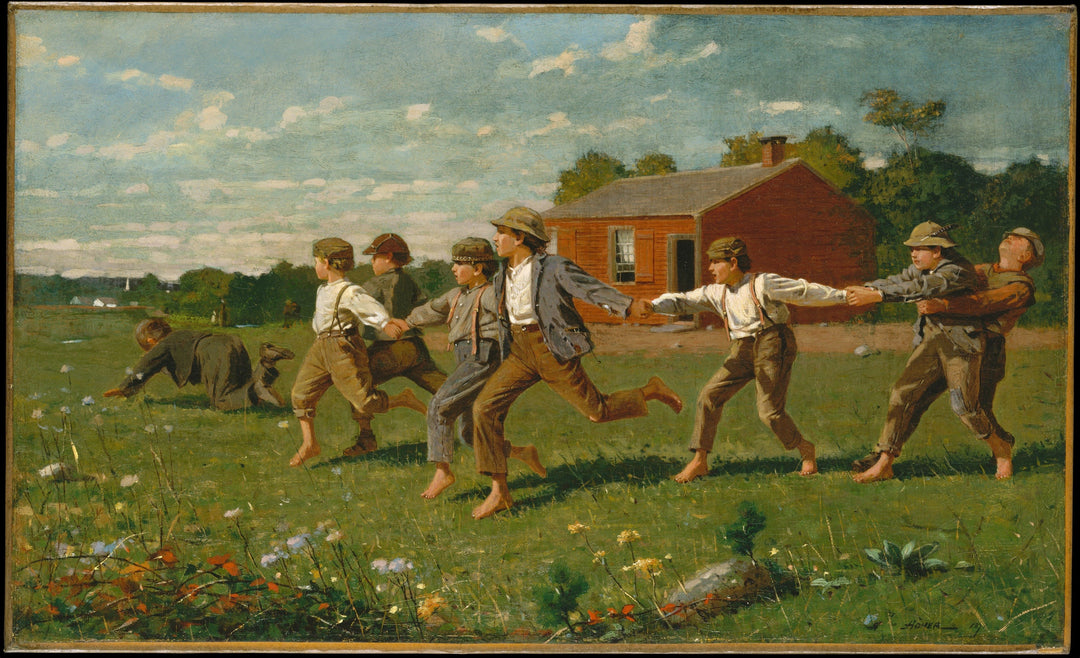
Winslow Homer

Winslow Homer, born in 1836, is one of the most important exponents of American realism. His career underwent significant changes due to his experiences in Europe and his indirect participation in the American Civil War. During the war, Homer worked as an illustrator on the front lines for Harper's Weekly magazine, where he captured the daily life of soldiers and camps, moving away from heroic battle scenes. This period influenced his realistic approach, showing the harshness and simplicity of life in times of conflict, something that would mark his later work, where the human being is shown in confrontation with forces beyond their control.
His trip to France in 1867 brought a new sensitivity to his work. Although he did not align directly with emerging movements like Impressionism, his contact with the Barbizon school led him to explore light and landscape with greater freedom. This is reflected in his treatment of color and plein air, as seen in later paintings focused on rural life.
Later, his stay in England, particularly in Cullercoats in 1881, was a turning point in his work. There, Homer was inspired by the harsh life of fishermen and their families, developing a more dramatic and emotion-laden approach, particularly in his maritime scenes. A work like "The Gulf Stream" reflects this evolution, where the power of the sea and the human struggle for survival became central themes.
After returning to the United States and settling in Prouts Neck, Maine, Homer consolidated his style, influencing later artists like Edward Hopper and Andrew Wyeth, who adopted his focus on isolation and the interaction between humans and nature.




